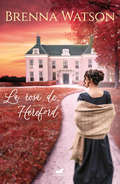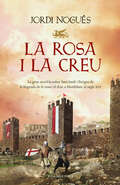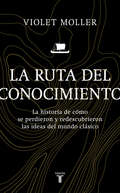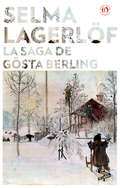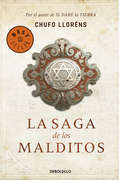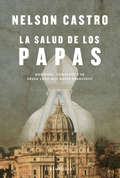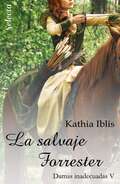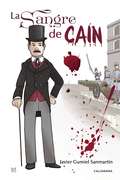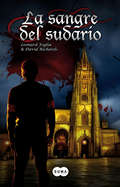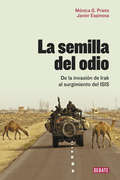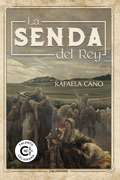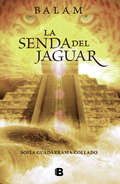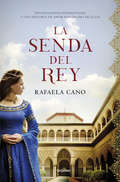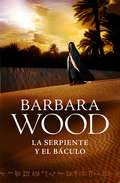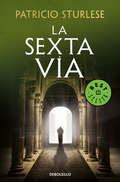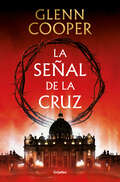- Table View
- List View
La rosa de Hereford
by Brenna WatsonA veces, solo en la adversidad descubrimos nuestro auténtico coraje. En plena campaña contra Napoleón y tras la muerte de su hermano, Nicholas Hancock abandona el ejército para convertirse en el nuevo conde de Sedgwick. Con él trae una promesa que se verá forzado a romper cuando la joven Madeleine Radford se cruce en su camino. Obligado a contraer matrimonio con ella para evitar un escándalo, Nicholas decide desterrarla a su propiedad más modesta y alejada de Londres. Once años después, tras coincidir en una fiesta, el rey expresará su deseo de conocer a su esposa Madeleine, y Nicholas no tendrá más remedio que volver a buscarla. Pero la mujer que encontrará en Hereford ya no es la joven asustada y tímida que dejó atrás. Ni aquella humilde propiedad es la misma que él le legó. ¿Puede el amor nacer entre las cenizas del rencor? ¿Y el tiempo curar las heridas del despecho? Nicholas y Madeleine tendrán que enfrentarse a supasado para descubrirlo.
La rosa en la escarcha (Velo de norte #Volumen 2)
by Judit FernándezEl trepidante desenlace de una apasionada historia de amor, aventura, camaradería y amistad. Amor, valor y fortuna: sus caminos están entrelazados, y tomen la decisión que tomen su amor habrá de sobrevivir a los azares del destino. Tras haber recuperado la memoria, libre ya de las calles y traiciones de Venecia, el camino conduce a Einar de regreso a Escandinavia junto a la joven cristiana. Un nuevo mundo de aventura y descubrimientos se abre ante Gabriella, que debe enfrentar una difícil decisión: luchar para adaptarse a la vida entre esos bárbaros salvajes junto al hombre que ama, o regresar a la tierra de aguas turquesas que tan bien conoce y volver a ponerse la túnica de «La sirena». ¿Podrá su amor sobrevivir a la inmensidad de los fríos parajes del norte y la hostilidad de los vikingos? ¿o los dioses mismos serán laluz que guíe su camino? Descubre la gran aventura que llevará a una joven cristiana a descubrir el mundo vikingo.
La rosa i la creu
by Jordi NoguésUna novel·la històrica apassionant que desvetlla tota la veritat de la llegenda de Sant Jordi El ferotge Du Guesclin i els cruels mercenaris de les Companyies Blanques creuen els Pirineus el 1365 i imposen el terror en terres catalanes. En arribar a Montblanc, assetgen les muralles i exigeixen or i dones per evitar la destrucció del municipi. La Marina, filla dels senyors de la vila, i altres noies acabaran així en mans d'aquest cavaller sanguinari i només un miracle podrà alliberar-les d'un destí terrible. Aconseguiran en Martí -un monjo de Poblet i gran coneixedor de les relíquies sagrades- i els seus companys de fortuna -el cavaller Robert, un pelegrí misteriós i una noia acusada de bruixeria- trobar la llegendària Llança de Sant Jordi, que confereix uns poders extraordinaris al seu portador? La rosa i la creu és una novel·la d'intriga i aventura fascinant que recrea amb una extraordinària ambientació històrica la vida a la Catalunya Nova, amb el rerefons de la guerra entre Pere el Cruel i Enric de Trastàmara. I desvetlla, segles més tard, la veritat que amaga la llegenda de sant Jordi...
La rosa roja (Los caballeros del Rey #Volumen 1)
by Jimena CookPrimera entrega de la serie «Los caballeros del Rey», una serie de romance medieval en la que la protagonista tendrá el corazón dividido entre dos hombres, uno cuyo rostro conoce y otro de rostro desconocido. Ella nunca sabrá la verdadera identidad del hombre que oculta su rostro y se hace llamar «El caballero de la rosa roja». Rosa, hija del marqués Álvarez de Toledo, intrépida y rebelde, no está dispuesta a seguir las directrices que se espera de ella. Su pasión por la orfebrería la llevará hasta el barrio judío de la ciudad toledana donde se verá involucrada en una serie de sucesos que cambiarán el rumbo de su vida. Un asesinato, un caballero con una identidad oculta y una joya deseada por muchos se cruzarán en su camino cambiando con brusquedad su destino. El capitán Alonso Díaz tiene una misión que le ha encomendado la reina Constanza: debe ir hasta los reinos del Norte y allí encontrar una esmeralda, pero antes de que pueda llevar a cabo su misión, la sospecha de una invasión de los almorávides en la ciudad de Toledo le obliga a viajar hasta allí y proteger sus murallas. La decisión del capitán Alonso Díaz hace que Rosa se cruce en su camino irrumpiendo de golpe en su vida. Nada será como antes. Intrigas y traiciones llevarán a ambos personajes a tomar decisiones que pondrán en peligro sus vidas. Una noble desaparecida, un trágico suceso, un caballero misterioso y una joya que muchos desean encontrar llevará a los protagonistas a realizar un viaje lleno de aventuras y peligros que les conducirá hasta la ciudad santa, Santiago de Compostela; allí, entre los muros de la catedral que se está construyendo se encuentran las respuestas a todas las preguntas. Y mientras esto sucede... el corazón de Rosa estará dividido entre dos hombres: el capitán Alonso Díaz y el misterioso caballero de La rosa roja.
La ruina de quedar atrapada con un marqués
by Nuria RiveraSus vidas serán otras cuando acabe la tormenta porque, aunque después de la lluvia siempre sale el sol, hay momentos que no pueden deshacerse. Cuando Leopold Bagss, marqués de Ridley, recibe la orden urgente de su padre de visitarlo y le exige que debe casarse con una mujer a la que no soporta, en un impulso sale a caballo hacia Londres sin pensar en las consecuencias. Poco después un diluvio detiene su viaje y se ve obligado a pasar la noche en un refugio. Pero la pequeña cabaña ya está ocupada por una insolent dama que, como él, busca asilo de la tormenta y que pretende echarlo con cajas destempladas. La honorable Sophia Sloane, desoyendo los consejos de su hermano, sale a montar una tarde y la sorprende un aguacero. Temerosa de los truenos desde niña, encuentra una pequeña cabaña en la que guarecerse hasta que estos amainen. Todo parece ir bien hasta que un huésped indeseado pretende instalarse también allí para pasar la noche, algo impensable para una dama decorosa como ella. ¿Cómo echar de su refugio a un hombre que le dobla el tamaño y que no quiere atender a las normas más básicas de cortesía de un caballero? Porque, si no es posible, ambos pagarán las consecuencias de su arriesgada imprudencia.
La ruta del conocimiento
by Violet MollerEl relato evocador y vibrante de cómo se rescataron las ideas del mundo clásico, el origen de nuestra herencia intelectual común. Tras la caída de Roma, muchas de las grandes ideas del mundo clásico, base del conocimiento moderno, se perdieron para siempre. Innumerables libros fueron destruidos por los cristianos, y la biblioteca de Alejandría, el mayor depósito de saber del mundo, fue arrasada. Pero tres manuscritos cruciales sobrevivieron a esa edad de la penumbra e impulsaron la llegada del Renacimiento. En este sorprendente debut, la historiadora Violet Moller rastrea los caminos que tomaron las ideas de tres de los más grandes científicos de la Antigüedad -Euclides, Galeno y Ptolomeo- a lo largo de más de mil años y a través de siete ciudades, centros de conocimiento excepcionales, donde una serie de personajes curiosos y eruditos, apoyados por un puñado de jefes de Estado ilustrados, rescatarony difundieron sus obras. Al explorar estas rutas del conocimiento, Moller revela la red de conexiones entre el mundo islámico y la cristiandad que preservaría y transformaría la astronomía, las matemáticas y la medicina: de la Alejandría del siglo VI al Bagdad del siglo IX, y de ahí a la Córdoba musulmana, al Toledo católico, a la facultad de medicina medieval de Salerno, luego a Palermo, con su vibrante mezcla de culturas y, finalmente, a Venecia, donde las imprentas permitieron que el saber se difundiera ampliamente y el Renacimiento echara raíces. La ruta del conocimiento es un relato emocionante, evocador y vibrante de nuestra herencia intelectual común. La crítica ha dicho:«Espléndido, deslumbrante, cautivador, escrito con pasión, entusiasmo y sentido del humor.»Catherine Nixey, autora de La edad de la penumbra «Estupendo debut de una autora joven y talentosa. Violet Moller recorre vívidamente los caminos por los que la sabiduría de la Antigüedad llegó hasta nosotros en un libro delicioso y ameno.»Peter Frankopan, autor de El corazón del mundo «Deslumbrante.»James Marriott, The Times «Moller rastrea con pasión las vicisitudes y la supervivencia de la palabra escrita. La historia es cautivadora, y está salpicada de ejemplos de empeño humano fuera de lo común.»Daisy Dunn, The Sunday Times «Un relato rico y vibrante, repleto de coloridas imágenes de Oriente y Occidente. Al igual que los manuscritos cuyos viajes rastrea, es iluminador.»Francesca Carrington, Tatler «Un libro inagotablemente fascinante, rico en detalles, amplio de miras y de enfoque humano.»Stephen Greenblatt, autor de El giro «Espléndido. Ambicioso pero conciso, profundamente investigado pero elegantemente escrito, y de lo más entretenido.»Tim Smith-Laing, The Telegraph «Un fascinante y meticuloso relato. Qué aventura.»Marcus Du Sautoy, autor de La música de los números primos «Meticulosa y entusiasta, Moller aviva su relato con las historias de jóvenes sabios que dedicaron su vida a preservar estos valiosos textos. La impresionante narración de cómo la civilización fue transmitida y preservada.»Kirkus Reviews
La ruta del conocimiento
by Violet MollerEl relato evocador y vibrante de cómo se rescataron las ideas del mundo clásico, el origen de nuestra herencia intelectual común. Tras la caída de Roma, muchas de las grandes ideas del mundo clásico, base del conocimiento moderno, se perdieron para siempre. Innumerables libros fueron destruidos por los cristianos, y la biblioteca de Alejandría, el mayor depósito de saber del mundo, fue arrasada. Pero tres manuscritos cruciales sobrevivieron a esa edad de la penumbra e impulsaron la llegada del Renacimiento. En este sorprendente debut, la historiadora Violet Moller rastrea los caminos que tomaron las ideas de tres de los más grandes científicos de la Antigüedad -Euclides, Galeno y Ptolomeo- a lo largo de más de mil años y a través de siete ciudades, centros de conocimiento excepcionales, donde una serie de personajes curiosos y eruditos, apoyados por un puñado de jefes de Estado ilustrados, rescatarony difundieron sus obras. Al explorar estas rutas del conocimiento, Moller revela la red de conexiones entre el mundo islámico y la cristiandad que preservaría y transformaría la astronomía, las matemáticas y la medicina: de la Alejandría del siglo VI al Bagdad del siglo IX, y de ahí a la Córdoba musulmana, al Toledo católico, a la facultad de medicina medieval de Salerno, luego a Palermo, con su vibrante mezcla de culturas y, finalmente, a Venecia, donde las imprentas permitieron que el saber se difundiera ampliamente y el Renacimiento echara raíces. La ruta del conocimiento es un relato emocionante, evocador y vibrante de nuestra herencia intelectual común. La crítica ha dicho:«La historiadora inglesa Violet Moller reconstruye la tradición vagabunda que permitió conservar el conocimiento grecolatino clásico a través de sus refugios en la época más oscura de la Edad Media.»El Mundo «La aventura de cómo el conocimiento ha sobrevivido una y otra vez a las catástrofes cíclicas que han asolado los tesoros bibliográficos en los que se albergaba la memoria colectiva de la Humanidad, su ciencia y su literatura.»La Razón «Permite llegar a una conclusión optimista: A pesar de las amenazar a lo largo de la Historia, siempre ha habido personas dispuestas a preservar el conocimiento y a mantenerlo ¿Por qué no pensar que eso sigue y seguirá pasando?»Las mañanas de Radio Nacional «No cuesta nada dejarse llevar por la pasión que muestra la autora a lo largo de un libro que atrapa al lector desde el principio y lo traslada por diversas ciudades del universo medieval siguiendo el rastro de aquellas obras clásicas "perdidas" en el marasmo de los primeros siglos medievales y el "cierre" (que no fue tal ni tanto) de aquella "autopista" que fuera el Mar Mediterráneo durante el Imperio Romano. [...]En definitiva, estamos ante un libro que brilla con un estilo amenísimo y que logra mantener "enganchado" al lector; un volumen de alta divulgación que encuentra un nicho en la historia cultural de los siglos medievales.»Hislibris «Espléndido, deslumbrante, cautivador, escrito con pasión, entusiasmo y sentido del humor.»Catherine Nixey, autora de La edad de la penumbra «Moller invita al lector a maravillarse ante el multiculturalismo del mundo antiguo, y revela cómo las bases del conocimiento de Occidente no saltaron sin más de Grecia a los tiempos modernos, sino que fueron concienzudamente preservados, estudiados y perfeccionados a lo largo de casi mil años.»The Washington Post «Estupendo debut de una autora joven y talentosa. Violet Moller recorre vívidamente los caminos por los que la sabiduría de la Antigüedad llegó hasta nosotros en un libro delicioso y ameno.»Peter Frankopan, autor de El corazón del mundo «Deslumbrante.»James Marriott, The Times «Moll
La ría de los afrancesados
by Ascensión Badiola AriztimuñoLA RÍA DE LOS AFRANCESADOS es una novela ambientada en el Bilbao del último cuarto del siglo XVIII. Un Bilbao con problemas "domésticos", como las inundaciones, la especulación del suelo o la pugna con otras anteiglesias y villas de Bizkaia a cuenta del férreo monopolio que ejerce sobre el puerto. Pero también un Bilbao afectado de lleno por lo que está ocurriendo en Europa. La brisa de las ideas ilustradas, acogidas con esperanza, por lo que suponen de palanca para modernizar el país, atenazado por el absolutismo, no tardará en tornarse en huracán, sumida en el torbellino de la Revolución y la guerra. En este marco, conviven una serie de personajes que representan una amplia gama de posturas y, lógicamente, también de sentimientos. Especialísimo protagonismo adquiere un grupo de mujeres. Aunque de muy diferente clase y condición, todas ellas laboran por abrirse paso en una sociedad que las tiene absolutamente relegadas.
La saga de Gösta Berling
by Selma Lagerlöf J. Rudolf SlabyGösta Berling es un joven ministro de la iglesia luterana que ha sido destituido a causa de su vida disoluta. La señora de Ekeby le salva de morir congelado y le acoge en su finca de Ekeby. No pasa mucho tiempo hasta que Gösta Berling encabeza un movimiento de rebelión. Poeta y poseedor de una encantadora personalidad, es el espíritu guía de los otros pensionistas, que finalmente manejan la propiedad a su antojo. Pero antes de que la historia llegue a su fin, Gösta se redime y hasta la anciana señora de Ekeby puede volver a su finca a morir.
La saga de los malditos
by Chufo LlorénsDos vidas. Dos mujeres. Dos amores por los que luchar. Judería de Toledo, 1387. A Esther y Simón los une un amor imposible: la familia de ella vería con buenos ojos que se casara con Rubén, un joven rabino de futuro prometedor. Todo empeora cuando una ola de fanatismo, avivada por intereses oscuros, hace que el barrio judío sea pasto de las llamas. Una nueva vida se abre ante todos ellos, y quizá para sobrevivir haya que renunciar al amor verdadero. Berlín, 1933. Tras el ascenso de Hitler, la rica familia judía de los Pardenvolk huye a Viena con su hija Hanna. Tras cambiar de apellido, los dos hijos varones, Sigfrid y Manfred, permanecen en la ciudad, al igual que Eric, el joven alemán a quien ama Hanna. Al tiempo que el nazismo se extiende por Europa, los tres hermanos Pardenvolk se incorporan a la resistencia para luchar contra el tirano, aunque a Hanna la mueve también otra causa: no traicionar su corazón. En La saga de los malditos Chufo Lloréns vuelve a demostrar su pasión por la historia y su dominio de la intriga novelesca. Reseña:«Sus vueltas de tuerca narrativas son herederas de Ken Follett.»La Vanguardia
La salud de los papas: Medicina, complots y fe. Desde León XIII hasta Francisco
by Nelson CastroComo el papado es una monarquía teocrática y los pontífices mueren en el poder, sus enfermedades juegan un papel relevante en el desempeño del cargo. Las especulaciones, los rumores y las intrigas palaciegas alcanzan dimensión mundial. «Nelson, tiene que escribir el libro de la salud de los papas. Empiece por mí. Le cuento mis neurosis.»Francisco Representantes de Dios en la Tierra, por siglos los papas han muerto en el trono hasta que, en los últimos años, diversas circunstancias pusieron en duda sus aptitudes para gobernar a causa del deterioro intelectual y físico. A un Juan Pablo II vencido por el Parkinson siguió la sorpresiva abdicación de Benedicto XVI. Fue Francisco quien buscó terminar con las intrigas palaciegas. Franqueándole al autor el mítico Archivo Vaticano y hablando él mismo, sin tapujos, sobre los dolores del cuerpo y los pesares del alma, hasta ahora tabúes, de un pontífice. De esta investigación inusitada surge un libro único. Revela -entre muchos otros secretos- la extraña muerte de Juan Pablo I a un mes de haber asumido, la negligencia que casi desangra a Juan Pablo II y los rumores del último cónclave, que buscaban desacreditar al candidato argentino aduciendo que solo tenía un pulmón. Nelson Castro, médico respetado y periodista de extensa trayectoria, entrevista a especialistas y testigos, indaga en libros, diarios y documentos celosamente resguardados y devela los misterios que rodearon las enfermedades papales, sus efectos dentro de la curia y las repercusiones en la vida de millones de fieles.
La salvaje Forrester (Damas inadecuadas #Volumen 5)
by Kathia IblisEl duque de Sutherland jamás imaginó que fuera una salvaje americana quien conquistase su corazón. Clío Wolf Forrester llegó a Londres con la única intención de visitar a su familia. Apodada como la salvaje Forrester lo que menos deseaba era interactuar con la aristocracia londinense. Hasta que por diversas circunstancias su camino se cruzó con el de cierto lord y pronto se encontró en una nueva aventura que pondría en riesgo su corazón. Lord Theodore Francis Gower, duque de Sutherland, espía de la Corona, tenía una última misión por cumplir y luego podría dejarlo todo para tener una vida normal. Sin embargo, cuando es secuestrado junto a cierta cautivante joven, todo cambia para él y se encuentra luchando por algo más que mantenerlos con vida. Estará luchando por el amor.
La sangre de Caín
by Javier Gumiel SanmartínUn libro que te sumergirá en el Madrid de finales del reinado de Isabel II y la Revolución de Septiembre de 1868 («La Gloriosa»), compartiendo, con un joven de Reus, momentos históricos apasionantes de nuestra Historia. <P><P>Mariano Pereantón es un joven de Reus, emparentado con el general Prim, recién llegado al Madrid de finales de 1864 para estudiar Derecho y al que toca vivir, como hombre y periodista, los últimos años del reinado de Isabel II y la Revolución de Septiembre de 1868. <P><P>En la capital conoce el amor y la amargura de la muerte, viviendo, como espectador, dos acontecimientos que definieron aquella época convulsa: la Noche de San Daniel (1865) y la sublevación de los sargentos de artillería del Cuartel de San Gil (1866). Estos sucesos, cuyas consecuencias sellaron el destino de la reina Isabel II, marcaron la vida de Mariano, obligándole a implicarse,como personaje secundario, en los acontecimientos que desembocaron en La Gloriosa.
La sangre del sudario
by Leonard FogliaUn thriller conmovedor en el que se retoma la historia de un niño engendrado en secreto con el ADN contenido en la venerada reliquia. ¿Cuál sería nuestra reacción ante un posible regreso del Hijo de Dios, o alguien que se considerase tal? ¿Qué haría él? Y sobre todo, ¿qué haríamos nosotros? Ahora el joven tiene 20 años y tras un milagroso suceso sale a la luz su paradero actual, lo que le convierte en el centro de atención de todos los medios. Continuación de la historia de El sudario. Novela polémica de temática histórico-religiosa, con temas de actualidad como las madres de alquiler.
La scommessa di una giovane vedova (Guida essenziale alla seduzione per le signore #3)
by Claire DelacroixSi era sposata una volta per dovere, ma si sposerà di nuovo solo per amore... Da sempre, il cuore di Eliza North era in possesso dell'amico di suo fratello maggiore, Nicholas Emerson. Ma Nicholas fu sempre stato ignaro di Eliza, e quando lui acquistò una commissione e partì per la guerra, lei invece si sposò. Tornata a casa del fratello da vedova, incontrerà di nuovo il tenente Emerson rendendosi conto che nessuno dei loro sentimenti è cambiato. Accetterà la richiesta di lui di fare da chaperon alla sorella minore di lui, Helena, sperando di poter ancora conquistare la sua attenzione, con l'aiuto della misteriosa signora Oliver e della sua guida alla seduzione. Nicholas Emerson non avrebbe mai potuto aspirare a sposare la figlia di un duca, soprattutto una persona così pragmatica come Eliza. Il fatto che lei si fosse sposata per quello che considerava un capriccio dell'amore lo portò a chiedersi quanto bene conoscesse Eliza. Lei era ancora l'unica donna che cattura la sua attenzione, ma lui sapeva che le sue ferite gli avrebbero impedito di sposarsi. Tuttavia, non potrà resistere all'opportunità di richiedere l'assistenza di Eliza per la sorella Helena e la possibilità di condividere la sua compagnia. Nessuno dei due prevederà il comportamento selvaggio di Helena o la loro necessaria alleanza per difenderne la sua reputazione. Affidata al manoscritto dei consigli della signora Oliver sulle arti seduttive, Eliza metterà a frutto i suoi consigli, con grande stupore di Nicholas. Come potrà rifiutare la donna che ama, pur sapendo di non poter mai assicurarle la felicità? In bilico tra l'onore e l'amore, Nicholas dovrà accettare la sua eredità dalla guerra perché questa coppia abbia un futuro: Eliza è la donna che potrà guarire le sue ferite per sempre?
La seducción de un conde (Las hijas de la aristocracia, #3 #3)
by Linda Rae SandeNunca se casaron por amor. ¿Pero sus sentimientos se convertirán en algo más? Henry Forster sólo ha amado a una mujer. Pero hay un problema: es la hija de un granjero, y su familia nunca le permitiría casarse con una chica de un estatus tan bajo como el de ella. Ahora, como conde que necesita un heredero, Henry se ve obligado a buscar una esposa, pero está decidido a mantener a su amante a su lado. Hannah Slater se dio cuenta hace mucho tiempo de que los hombres nunca aman a sus esposas. Hizo las paces con ese conocimiento, y su desesperada necesidad de tener un hijo la lleva a aceptar la propuesta de matrimonio de Henry. A ella no le importa su amante, siempre y cuando él le dé lo que quiere. Pero a medida que se asientan en la vida matrimonial, una improbable chispa comienza a surgir entre la pareja. Henry llega a admirar la actitud audaz y el sentido de los negocios de su nueva esposa, y Hannah se ve obligada a replantearse su actitud ante los hombres casados. Pero cuando ocurre la tragedia, ¿se lanzará la pareja a los brazos del otro? ¿O acabarán atrapados para siempre en un matrimonio sin amor? Si te gustan las encantadoras novelas románticas históricas de la época de la Regencia con amantes improbables, un final feliz y una hermosa Inglaterra del siglo XIX como telón de fondo, entonces adorarás Seducción de un conde, de la autora superventas Linda Rae Sande. Sube a la página y hazte con tu ejemplar ahora.
La semilla del odio
by Javier Espinosa Mónica G. Prieto¿En qué momento se desató el caos e imperó el horror en Oriente Próximo? En La semilla del odio los reporteros Mónica G. Prieto y Javier Espinosa revisan la historia reciente de la región más convulsa del mundo para esclarecer las causas que originaron el conflicto. La invasión ilegal de Bagdad en 2003 y el desgobierno posterior levantó a la población de Irak en armas, pero también resucitó el odio sectario que había permanecido enterrado durante la dictadura de Sadam Hussein. El ascenso al poder de la mayoría chií, reprimida por la minoría suní durante décadas, y la impunidad de los ocupantes alimentó la aparición de una insurgencia nacionalista que en su lucha contra las fuerzas extranjeras se alió con los yihadistas, más proclives a sembrar el terror con atentados suicidas y secuestros que a combatir los soldados de la alianza liderada por EEUU, en la que participó España. El auge de los radicales liderados por el jordano Abu Musab al Zarqaui terminó así por imponer un califato del terror en amplias regiones del país, exportando su agenda a todo Oriente Próximo. En La Semilla del Odio, Mónica G. Prieto y Javier Espinosa realizan un exhaustivo repaso a una década de vivencias en una de las zonas más convulsa del mundo y reconstruyen, mediante palpitantes y estremecedores reportajes, los pasos que llevaron a una región a quedar secuestrada por el Estado Islámico de Irak, origen del ISIS.
La semilla del odio: De la invasión de Irak al surgimiento del ISIS
by Javier Espinosa Mónica G. Prieto¿En qué momento se desató el caos e imperó el horror en Oriente Próximo? En La semilla del odio los reporteros Mónica G. Prieto y Javier Espinosa revisan la historia reciente de la región más convulsa del mundo para esclarecer las causas que originaron el conflicto. La invasión ilegal de Bagdad en 2003 y el desgobierno posterior levantó a la población de Irak en armas, pero también resucitó el odio sectario que había permanecido enterrado durante la dictadura de Sadam Hussein. El ascenso al poder de la mayoría chií, reprimida por la minoría suní durante décadas, y la impunidad de los ocupantes alimentó la aparición de una insurgencia nacionalista que en su lucha contra las fuerzas extranjeras se alió con los yihadistas, más proclives a sembrar el terror con atentados suicidas y secuestros que a combatir los soldados de la alianza liderada por EEUU, en la que participó España. El auge de los radicales liderados por el jordano Abu Musab al Zarqaui terminó así por imponer un califato del terror en amplias regiones del país, exportando su agenda a todo Oriente Próximo. En La Semilla del Odio, Mónica G. Prieto y Javier Espinosa realizan un exhaustivo repaso a una década de vivencias en una de las zonas más convulsa del mundo y reconstruyen, mediante palpitantes y estremecedores reportajes, los pasos que llevaron a una región a quedar secuestrada por el Estado Islámico de Irak, origen del ISIS.
La senda de las rosas (Bilogía El mal de la guerra #Volumen 1)
by Agatha AllenAmbientada en la Barcelona de Jaime I, durante la conquista de Mallorca a los sarracenos, Agatha Allen nos ofrece una novela romántica en la que el amor, guerra, intriga y aventuras en esta primera entrega de la bilogía «El mal de la guerra». ¿Qué se interpone entre los enamorados Marc y Ada? ¿Es simplemente el Mau, vástago del barón de Riera y del Tesor, tercero en discordia, o es realmente Marc un asesino? En la Barcelona de los tiempos de Jaime I aparecen doncellas asesinadas, todas ellas relacionadas con Marc Rosas, un joven enamorado de Ada, hija de menestrales, a quien pretende el noble Dalmau, --el Mau--, que no duda en acusar a su rival de todos los crímenes. Para soslayar las sospechas y a su vez adquirir fama y fortuna, Marc Rosas embarca como soldado en la empresa de la conquista de Mallorca, donde sufre el sitio en la primera línea de ataque. ¿Cuáles son las consecuencias reales de la guerra? ¿Por qué es el hombre lobo para el propio hombre? ¿Puede el amor superar todas las barreras, incluso en tiempos en que el matrimonio no se regía precisamente por amor? Esta novela de aventuras, y sin embargo muy real, acepta el reto de plantearnos dudas de tan difícil respuesta y apostar por el amor verdadero.
La senda del Rey
by Rafaela CanoDos religiones enfrentadas. Un solo destino. La publicación por parte de Felipe III en 1611 del bando de expulsión de los moriscos a Berbería es el detonante para que la vida de la apacible villa de Magacela se vea alterada. <P><P>El enfrentamiento entre moriscos seguidores de Mahoma y aquellos otros que han abrazado la fe en Cristo, el amor pasional entre Mencía y Tristán, los celos de María de Paredes, el vergonzante y oscuro pasado de Elvira, la locura de Muley Zaidan, sultán de Marruecos, por la pérdida de sus libros, el secreto de la biblioteca de San Lorenzo el Real... son algunas de las tramas que se entrecruzan en esta ágil y épica novela histórica. <P>Rafaela Cano, como ya hiciera en Los Ojos de Dios, nos describe magistralmente los exóticos escenarios de Marrakech, las dehesas de Extremadura o la bulliciosa Sevilla del siglo XVII en los que personajes reales y ficticios, Oriente y Occidente, hidalgos y moriscos, cristianos y musulmanes, se funden en la trepidante historia de una sociedad no tan lejana en el tiempo.
La senda del jaguar: La Senda Del Jaguar
by Antonio Guadarrama ColladoLa senda del jaguar es la segunda parte de la trilogía novelística "Enigmas de los dioses del México antiguo". En esta entrega, el eje narrativo es la estremecedora historia del náufrago español Gonzalo Guerrero, quien se integró a la cultura maya y se convirtió en uno de los principales adversarios de los conquistadores españoles de la península de Yucatán. Este extraordinario episodio se alterna con otras historias que acontecen en el México contemporáneo, un escenario en el que confluyen la corrupción, la violencia, el fanatismo religioso y la impunidad, dando forma a un inquietante mosaico de intrigas y suspenso.
La senda del rey (Premio Caligrama 2018)
by Rafaela CanoDos religiones enfrentadas. Una historia de amor. Un solo destino. El decreto de expulsión de los moriscos obliga a Tristán a abandonar su aldea y a su amada Mencía. 1611. Felipe III sale en procesión para festejar la expulsión de los moriscos de los reinos españoles. Mientras, en Extremadura, el joven Tristán debe dejar atrás su aldea y a la joven cristiana a quien ama. El enfrentamiento entre moriscos seguidores de Mahoma y aquellos otros que han abrazado la fe en Cristo, el amor imposible entre Mencía y Tristán, el vergonzante y oscuro pasado de Elvira, el valioso secreto que la biblioteca de San Lorenzo de El Escorial atesora tras sus muros y la locura que la pérdida de sus preciados libros desata en Muley Zaidán, sultán de Marruecos, son algunas de las tramas que se entrecruzan en esta emocionante y épica novela histórica. La Senda del reyes la consagración de una voz nueva y sugerente en la novela histórica española. Reseñas:«[...] si esta novela tiene un valor añadido es su capacidad de "enganchar" al lector, de atraparlo y conseguir que su curiosidad le anime, página tras página, a avanzar hacia el final. Algo que para muchos es, ni más ni menos, el placer de la literatura.»Zendalibros.com «[...] entretenimiento, fidelidad histórica y eficacia narrativa son precisamente los tres conceptos que caracterizan a la autora Rafaela Cano.»Mundiario
La serpiente y el báculo
by Barbara WoodUna gran historia de amor, traición y venganza en una época fascinante y de profundos cambios sociales. Ugarit, Siria, 1450 a. C. La familia de Lea, hija de un próspero viticultor, tuvo que huir de su hogar en Jericó la noche en que los egipcios les invadieron. Aunque con dieciocho años la joven es considerada mayor para casarse, Jotam, un constructor de barcos acaudalado, pide su mano en matrimonio. Durante la ceremonia, ella le rechaza en público y él promete vengarse del ultraje. Cuando el escriba Daveed llega a la casa de Lea para trabajar en el negocio familiar, ambos sienten enseguida una fuerte atracción. Lo suyo no debería ser una relación de amor porque él se dedica en cuerpo y alma a su vocación, entrar en la sagrada Hermandad de los Escribas, y Lea a estudiar el poder curativo de las plantas. Sin embargo, tendrán que unir sus fuerzas y sus talentos para salvar de la miseria a la familia de Lea y para enfrentarse a una nueva invasión egipcia. Reseña:«Wood demuestra ser una maga mezclando acción y romance, y manteniendo la energía y la chispa de ambos.»Kirkus Reviews
La sexta vía
by Patricio SturleseDescubre una épica aventura que podría cambiar el rumbo de la cristiandad. La Iglesia teme por la extinción de la fe en detrimento de la razón. Los adoradores del diablo tienen la ocasión de aniquilar la cristiandad. Un antiguo documento, escrito por doctas y católicas manos, puede provocar el fin de todas las religiones. Y los componentes de la Corpus Carus deben mantener esa prueba oculta. En los albores del siglo xvii empieza una batalla donde el límite entre el bien y el mal es más difuso que nunca. Una batalla sin tregua en la que el sexo, la magia negra, la traición y la ambición de poder son simples monedas de cambio en el tablero sobre el que el bien y el mal pugnan por la supremacía. Una batalla que se libra entre hogueras y castillos. Una batalla donde la fe es una peligrosa arma de doble filo.
La señal de la cruz
by Glenn CooperUn thriller sobre estigmas, reliquias ocultas y el resurgir del pasado más terrible de la historia. Una aventura apasionante, llena de misterio y giros inesperados. Cal Donovan, eminente profesor de Historia de las religiones y Arqueología en Harvard, es llamado con urgencia al Vaticano. Debe dar su opinión sobre el misterioso caso de un sacerdote que sufre los estigmas de la crucifixión y afirma tener visiones místicas. Donovan comprueba asombrado que las heridas del religioso son reales y que se parecen a las infligidas a Jesús en la cruz. La situación se convierte en preocupante cuando el clérigo es secuestrado y Donovan descubre que él no es el único interesado en este supuesto milagro. ¿Por qué una misteriosa sociedad trata desesperadamente de averiguar la clave de los estigmas? La respuesta es un secreto milenario y será una verdadera bomba de relojería si cae en las manos equivocadas. Vuelve el autor de La biblioteca de los muertos con más de tres millones de ejemplares vendidos en el mundo.
